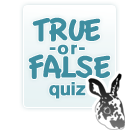What is E Cuniculi?
Encephalitozoon cuniculi (EC) is a parasite that causes lesions (called “granulomas”) in such organs as the kidneys, liver and brain. Even today, EC is still not well understood in the rabbit community. Theories and opinions regarding transmission, treatment and the severity of the problems caused by this parasite vary widely. To date, none of the theories have really been proven or not proven by a definitive study. Because EC is a protozoon, it is difficult to find this organism in the live rabbit, and often, the protozoan is not even found during a post mortem exam.
How is EC transmitted?
The majority of rabbits seem to become infected with EC from their mothers. Infection can also occur when something contaminated by urine containing EC spores has been ingested. Approximately one month after the rabbit is infected it begins to shed EC spores via its urine. Spores continue to be shed for approximately 3 months, but can be shed throughout the rabbit’s life.
What problems does EC cause?
Some experts feel that the majority of rabbits who have been exposed to EC do not suffer any health consequences as a result of this exposure. Others feel that EC is responsible for a whole host of health problems, including renal failure, convulsions, torticollis (head tilt or wry neck), hind limb weakness or loss of balance, nystagmus (eye twitching) and incontinence. Rabbits affected by EC before they are born (via the placenta) may develop lesions around the eyes, which sometimes cause visible white spots in the eye.
How is EC detected?
Antibodies to EC can be detected through a blood test called a titer test. A rabbit who has been exposed to EC in its lifetime will produce antibodies as a result of this exposure. A titer test is used to detect the level of the antibody to the organism in the blood. A positive titer tells you that the rabbit has been exposed to this parasite at some point in its life. Note that this does not allow you to differentiate between simple exposure and an active infection. By doing two titer tests (with an interval of time in between) and comparing the results, it is possible to determine if the rabbit is mounting an immune response to an active infection or if he was previously infected. However, even with a rising titer, you can’t determine for certain that a particular health problem is being caused by EC or something else. Head tilt, for example, has many causes other than EC, including bacterial or viral infections, trauma and toxicity. A false negative titer may also result if an infected animal produces an inadequate amount of antibodies.
How is EC treated?
There are several treatment options for rabbits infected with EC. At the time of this writing, the most widely prescribed treatment is probably one of the benzimidazoles (oxibendazole, albendazole or fenbendazole). Of these drugs, fenbendazole is the only one that has been studied and believed to cure the infection, rather than just control it (Veterinary Record, April 2001*). Other treatment options are discussed in Can Encephalitozoon cuniculi, a protozoal parasite of the nervous system, be treated with pyrimethamine?
* Suter C., Muller-Doblies U.U., Hatt J-M., Deplazes P., (2001) Prevention and Treatment of Encephalitozoon cuniculi in rabbits with fenbendazole. Veterinary Record 148
Further reading:
• Encephalitozoon Cuniculi -by The Rabbit Welfare Association and Fund
• Encephalitozoon Cuniculi -by Molly Varga, Ashleigh Veterinary Practice, 26 June 2003
• Rabbit References – A collection of articles on EC
• Rabbit Diseases, Sound Diagnostics Inc. This article provides information about testing for EC.

